When it comes to creating a satisfying weeknight dinner, few dishes can compete with the bold flavors and impressive presentation of pepper steak. Moreover, this classic recipe brings together tender strips of beef with vibrant bell peppers in a savory sauce that’s both comforting and sophisticated. Additionally, pepper steak offers the perfect solution for busy home cooks who want to serve something special without spending hours in the kitchen.
Furthermore, this dish has roots in both Chinese-American cuisine and traditional stir-fry techniques. Consequently, it delivers that perfect balance of protein and vegetables that makes for a well-rounded meal. Therefore, whether you’re cooking for your family or entertaining guests, this pepper steak recipe will undoubtedly become a favorite in your dinner rotation.
Table of Contents
Why I Love This Recipe
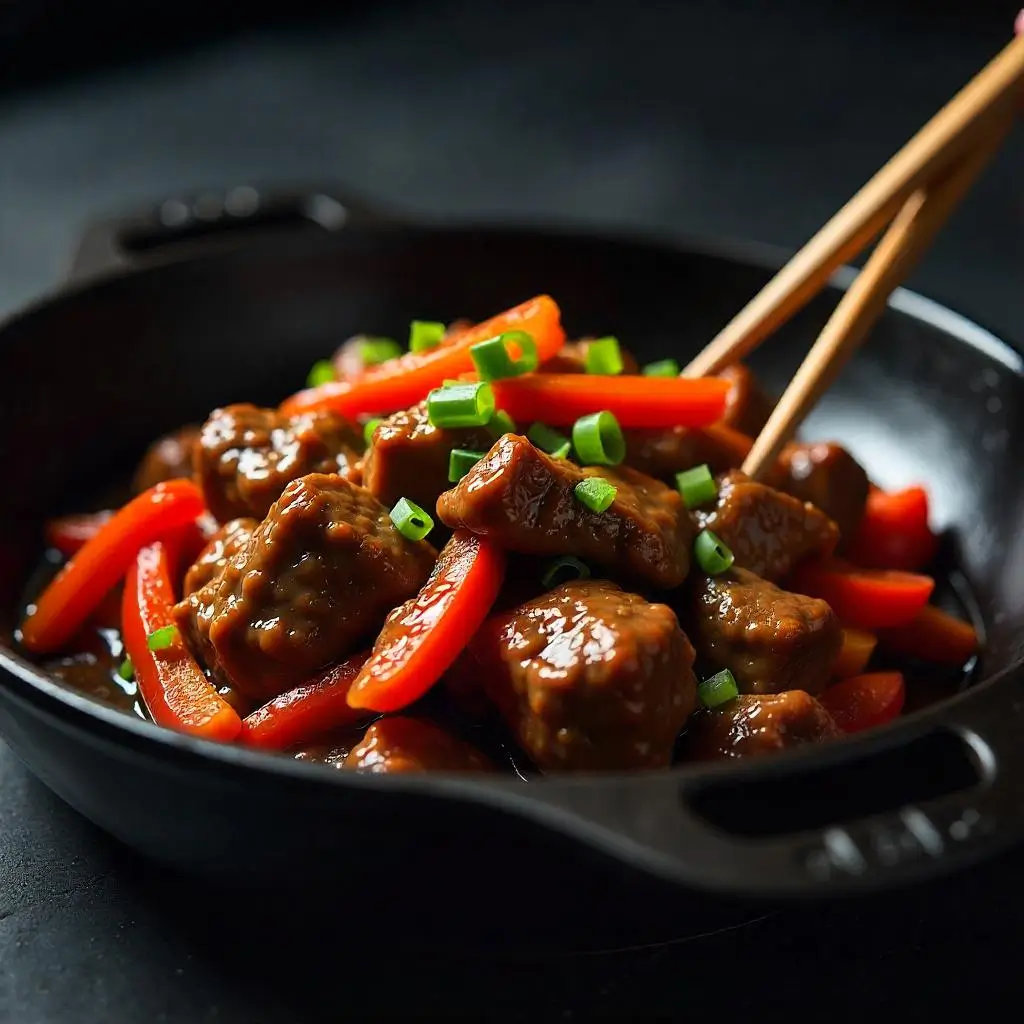
First and foremost, this pepper steak recipe holds a special place in my heart because it reminds me of family dinners growing up. Similarly, it represents the kind of cooking that brings people together around the dinner table. Additionally, what makes this recipe particularly appealing is its incredible versatility and forgiving nature.
Furthermore, I appreciate how this dish transforms simple, everyday ingredients into something truly spectacular. Moreover, the combination of textures – from the tender beef to the crisp-tender peppers – creates an eating experience that’s both satisfying and exciting. Additionally, the sauce strikes the perfect balance between savory and slightly sweet, which appeals to both adults and children alike.
Most importantly, this recipe proves that you don’t need complicated techniques or exotic ingredients to create restaurant-quality food at home. Subsequently, it has become my go-to recipe when I want to impress without stress.
Key Ingredients
To begin with, the success of this pepper steak recipe depends on selecting quality ingredients. Furthermore, each component plays a crucial role in building the overall flavor profile.
For the Beef:
- Firstly, choose flank steak or sirloin for the best texture and flavor
- Additionally, proper slicing against the grain ensures tenderness
- Moreover, marinating the beef enhances both flavor and texture
For the Vegetables:
- Similarly, bell peppers provide sweetness and crunch
- Furthermore, onions add depth and aromatic foundation
- Additionally, garlic contributes essential savory notes
For the Sauce:
- Meanwhile, soy sauce forms the salty, umami base
- Furthermore, beef broth adds richness and body
- Additionally, cornstarch creates the perfect glossy thickness
- Moreover, a touch of sugar balances the saltiness
Supporting Ingredients:
- Subsequently, fresh ginger adds warmth and complexity
- Furthermore, vegetable oil ensures proper high-heat cooking
- Additionally, green onions provide fresh, mild onion flavor for garnish
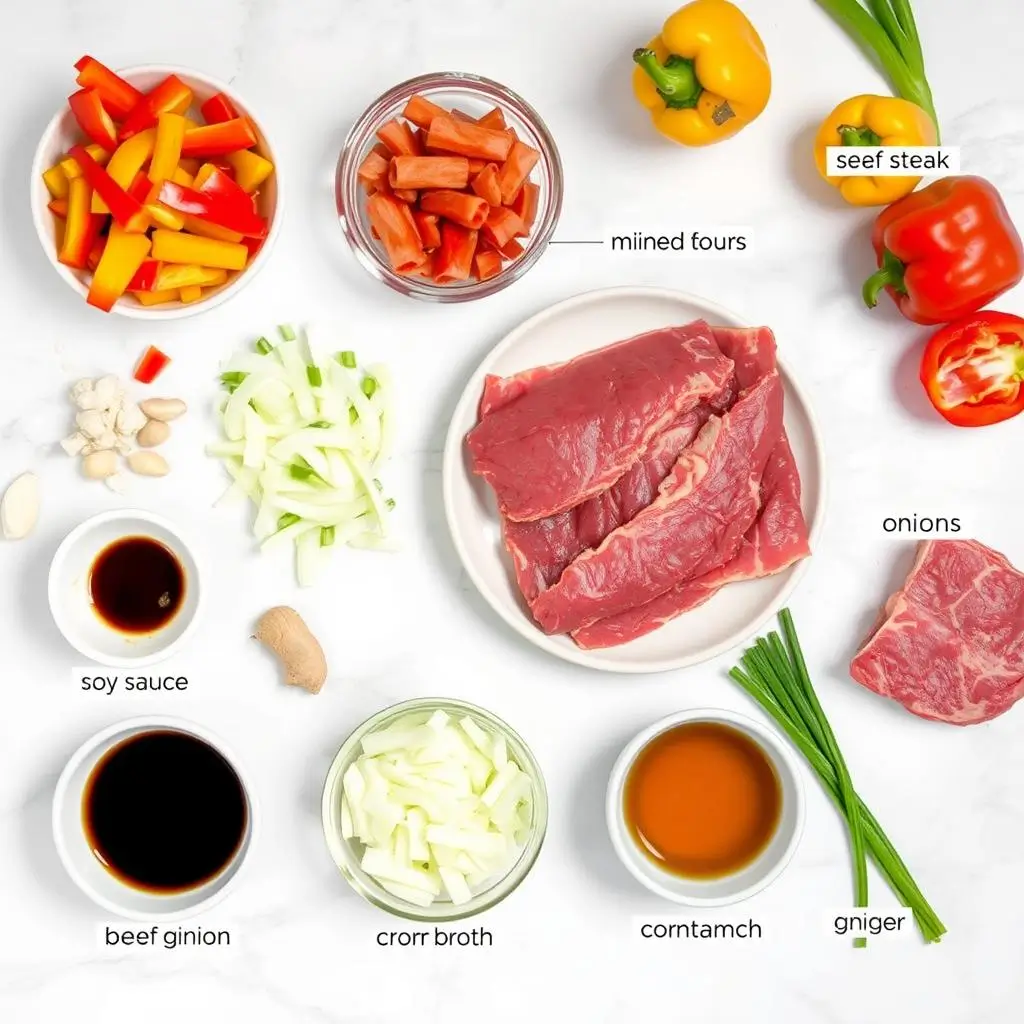
Step-by-Step Instructions
Preparation Phase
To start, gather all your ingredients and prepare your workspace. Next, this recipe moves quickly once cooking begins, so having everything ready is essential. Additionally, proper preparation ensures smooth execution and better results.
Step 1: Prepare the Beef First, slice the flank steak against the grain into thin strips, approximately ¼-inch thick. Then, place the beef in a bowl and season with salt and pepper. Subsequently, let it sit at room temperature for 15-20 minutes while you prepare other ingredients.
Step 2: Prepare the Vegetables Meanwhile, wash and slice the bell peppers into strips similar in size to the beef. Next, slice the onion into thin half-moons. Additionally, mince the garlic and ginger finely. Furthermore, chop the green onions for garnish and set aside.
Step 3: Make the Sauce Subsequently, in a small bowl, whisk together soy sauce, beef broth, cornstarch, and sugar until smooth. Moreover, make sure the cornstarch is completely dissolved to prevent lumps in the final sauce.
Cooking Phase
Step 4: Heat the Pan First, heat a large wok or skillet over high heat until smoking. Then, add 1 tablespoon of oil and swirl to coat the bottom. Additionally, the high heat is crucial for proper searing and preventing the beef from steaming.
Step 5: Cook the Beef Next, add the beef strips in a single layer, avoiding overcrowding. Furthermore, let them sear undisturbed for 1-2 minutes until browned. Then, stir-fry for another 1-2 minutes until just cooked through. Subsequently, remove the beef to a plate and set aside.
Step 6: Cook the Vegetables Additionally, add another tablespoon of oil to the same pan. Then, add the onions and cook for 2 minutes until slightly softened. Next, add the bell peppers and continue cooking for 2-3 minutes until crisp-tender. Furthermore, add the garlic and ginger, cooking for another 30 seconds until fragrant.
Step 7: Combine and Finish Finally, return the beef to the pan with the vegetables. Then, give the sauce mixture a quick stir and pour it over the beef and peppers. Additionally, toss everything together and cook for 1-2 minutes until the sauce thickens and coats everything beautifully. Subsequently, remove from heat and garnish with chopped green onions.
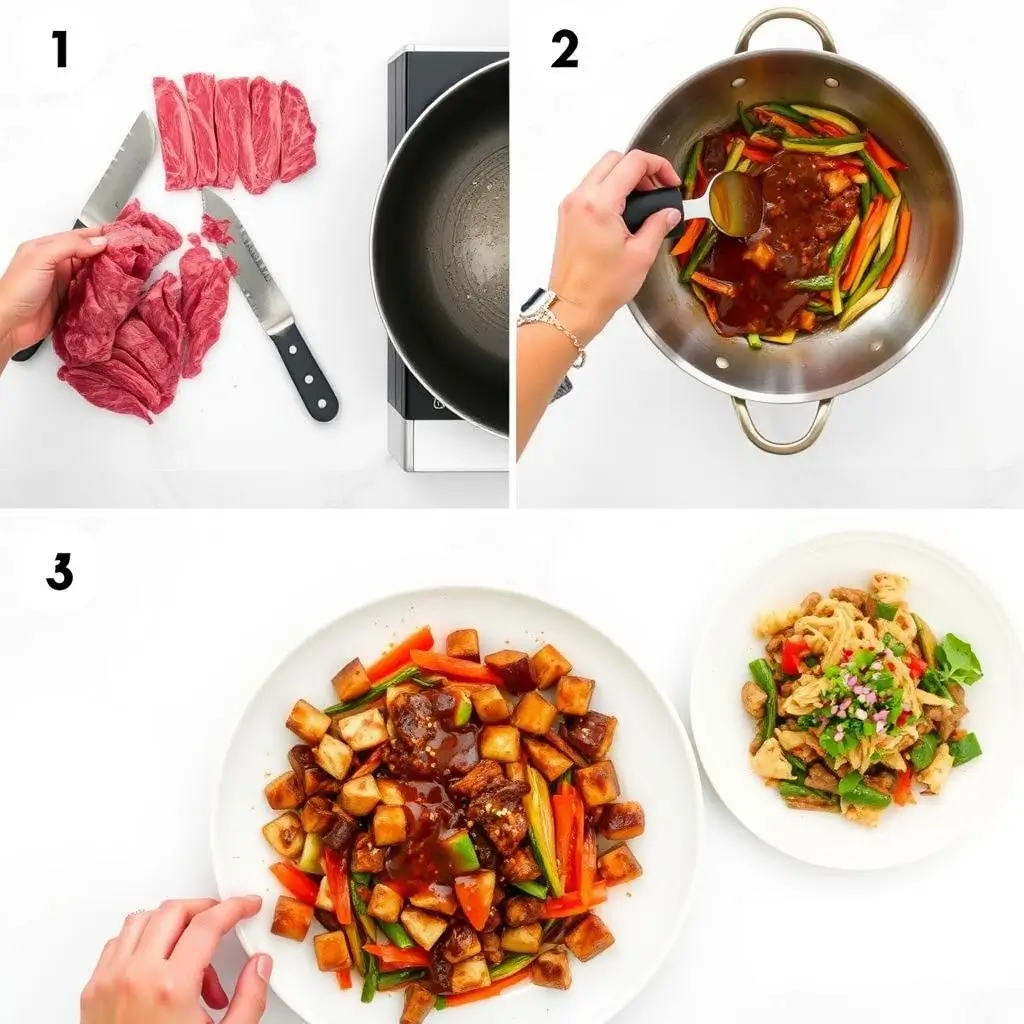
Storage Instructions
Fortunately, pepper steak stores well and makes excellent leftovers. Additionally, proper storage ensures you can enjoy this dish for several days.
Refrigerator Storage: First, allow the pepper steak to cool completely before storing. Then, transfer to airtight containers and refrigerate for up to 3-4 days. Furthermore, the flavors often improve after a day as they have time to meld together.
Freezer Storage: Alternatively, you can freeze pepper steak for longer storage. Initially, portion the cooled dish into freezer-safe containers or bags. Subsequently, it will keep for up to 3 months in the freezer. Moreover, label containers with the date for easy identification.
Reheating Instructions: When ready to enjoy leftovers, you have several options. Firstly, reheat in the microwave in 30-second intervals, stirring between each interval. Alternatively, reheat in a skillet over medium heat, adding a splash of broth if needed. Additionally, if reheating from frozen, thaw overnight in the refrigerator first for best results.
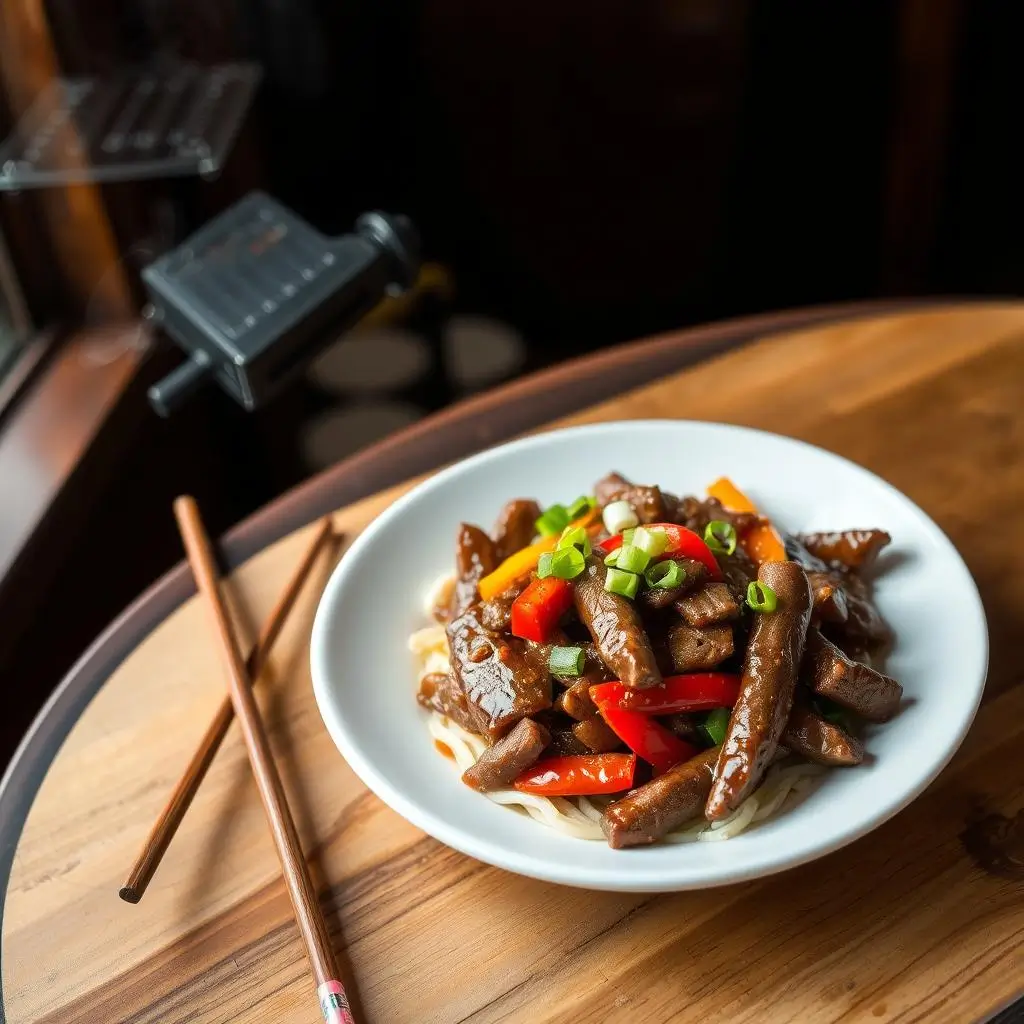
Expert Tips for Perfect Pepper Steak
Through years of making this recipe, I’ve discovered several techniques that elevate the final result. Moreover, these tips will help you avoid common pitfalls and achieve restaurant-quality results every time.
Beef Preparation Tips: First and foremost, always slice against the grain for maximum tenderness. Additionally, partially freezing the beef for 30 minutes makes slicing much easier and more uniform. Furthermore, don’t skip the room temperature rest period, as it ensures even cooking.
Cooking Technique Tips: Similarly, maintaining high heat throughout cooking is crucial for proper texture. Moreover, avoid overcrowding the pan, which causes steaming instead of searing. Additionally, have all ingredients prepped and ready, as this dish cooks quickly once started.
Sauce Secrets: Furthermore, always whisk the sauce mixture right before adding it to the pan, as cornstarch tends to settle. Additionally, taste and adjust seasoning at the end, as different soy sauce brands vary in saltiness. Moreover, if you prefer a thicker sauce, mix an extra teaspoon of cornstarch with cold water and add gradually.
Vegetable Perfection: Meanwhile, cut all vegetables uniformly for even cooking. Additionally, bell peppers should retain some crunch for the best texture contrast. Furthermore, if you prefer softer vegetables, simply cook them a minute or two longer.
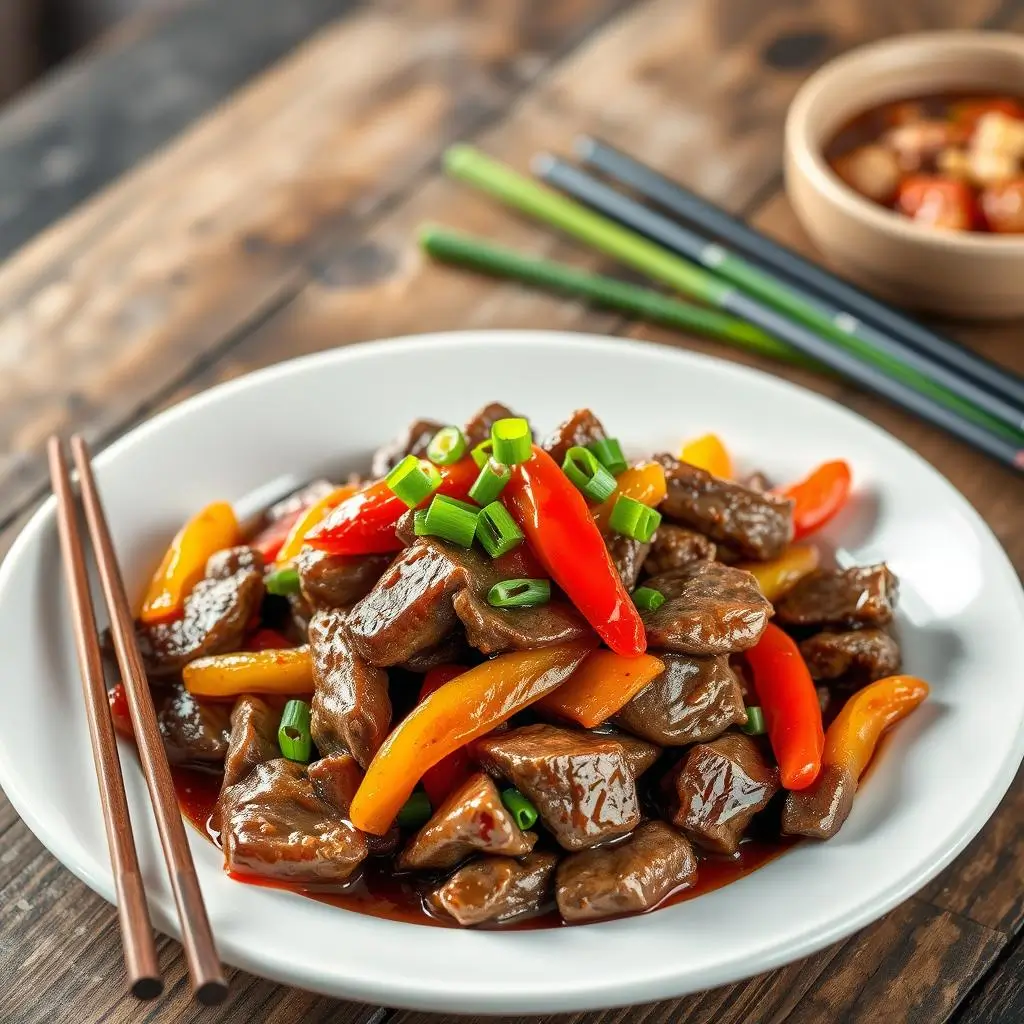
Nutritional Information
Additionally, understanding the nutritional benefits of this dish helps you appreciate its value beyond just taste. Moreover, pepper steak provides a well-balanced combination of protein, vegetables, and essential nutrients.
Per Serving (approximately):
- Calories: 285
- Protein: 28g
- Carbohydrates: 12g
- Fat: 14g
- Fiber: 3g
- Sodium: 680mg
Health Benefits: Furthermore, this dish offers several nutritional advantages. First, the lean beef provides high-quality protein and iron. Additionally, bell peppers are rich in vitamin C and antioxidants. Moreover, the garlic and ginger offer anti-inflammatory properties. Subsequently, when served over brown rice, it becomes an even more nutritious meal.
Dietary Modifications: For those with dietary restrictions, this recipe adapts easily. For instance, use tamari instead of soy sauce for a gluten-free version. Additionally, coconut aminos can replace soy sauce for those avoiding soy. Furthermore, the recipe is naturally dairy-free and can easily fit into low-carb diets when served without rice.
More Delicious Recipes
- Tuscan Chicken
- Old Fashioned Salmon Patties
- Bottom Round Roast
- Smoky and Succulent Chipotle Steak
- Boston Baked Beans
- Crab Brulee
- White Gravy
- Chicken Tetrazzini
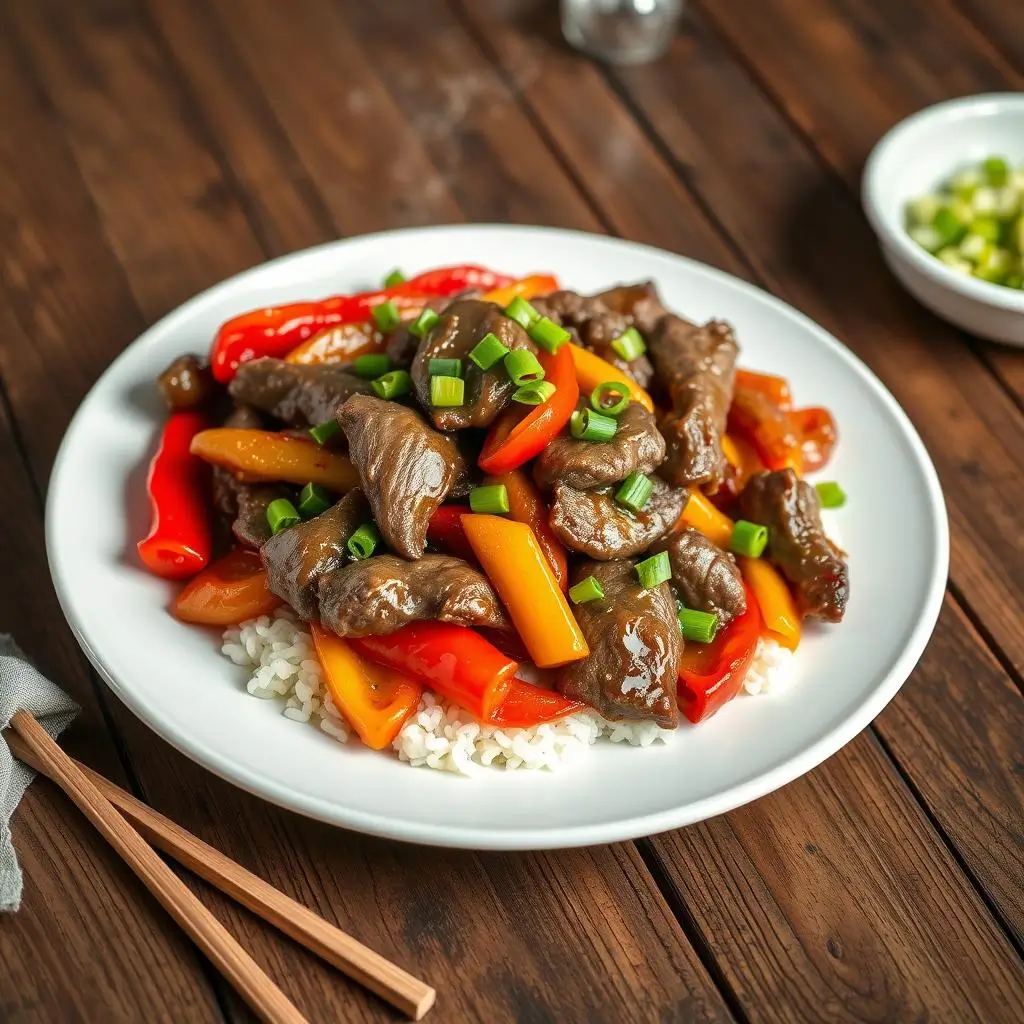
In conclusion, this pepper steak recipe represents everything I love about home cooking: simplicity, flavor, and versatility. Moreover, it proves that with the right techniques and quality ingredients, you can create restaurant-worthy dishes in your own kitchen. Additionally, the combination of tender beef, crisp vegetables, and savory sauce creates a meal that satisfies both body and soul.
Furthermore, this recipe’s adaptability means you can make it your own by adjusting vegetables, spice levels, or serving methods. Subsequently, it becomes not just a recipe you follow, but a foundation for your own culinary creativity. Most importantly, it brings people together around the dinner table, creating memories alongside delicious food.
Therefore, I encourage you to try this recipe and make it part of your regular dinner rotation. Additionally, don’t hesitate to experiment with variations and make it uniquely yours. After all, the best recipes are those that evolve with your tastes and preferences while maintaining their essential delicious character.
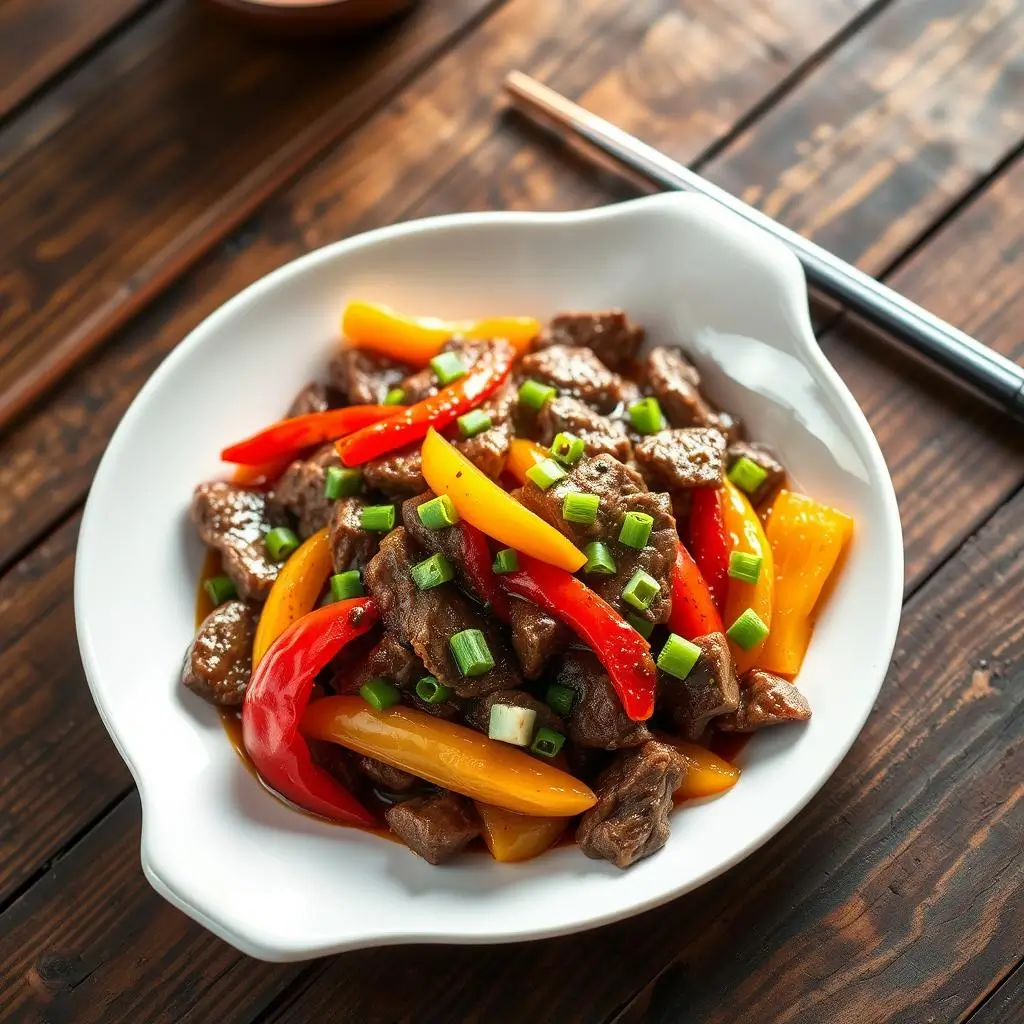
How to Make Pepper Steak: A Simple and Delicious Recipe
Description
Learn how to make perfect Pepper Steak with tender beef strips and crisp bell peppers in savory sauce. Easy 25-minute recipe with expert tips!
Ingredients
For the Beef:
For the Vegetables:
For the Sauce:
Instructions
- Prep the Beef: First, slice flank steak against the grain into ¼-inch strips. Then, season with salt and pepper. Additionally, let stand at room temperature for 15 minutes.
- Prepare Sauce: Meanwhile, whisk together soy sauce, beef broth, cornstarch, and sugar in a small bowl until smooth. Furthermore, set aside until ready to use.
- Heat Pan: Next, heat wok or large skillet over high heat until smoking. Then, add 1 tablespoon oil and swirl to coat.
- Cook Beef: Subsequently, add beef in single layer and sear for 1-2 minutes undisturbed. Then, stir-fry for 1-2 minutes more until just cooked. Additionally, remove to plate and set aside.
- Cook Vegetables: Furthermore, add remaining oil to pan. Then, add onions and cook 2 minutes. Next, add bell peppers and cook 2-3 minutes until crisp-tender. Additionally, add garlic and ginger, cooking 30 seconds until fragrant.
- Combine: Finally, return beef to pan. Then, stir sauce mixture and pour over beef and vegetables. Additionally, toss and cook 1-2 minutes until sauce thickens. Subsequently, garnish with green onions and serve immediately.
Notes
- Most importantly, slice beef against the grain for tenderness
Additionally, maintain high heat for proper searing
Furthermore, have all ingredients prepped before starting to cook
Moreover, don’t overcook vegetables – they should retain some crunch
February 2, 2025 at 3:12 amearum6